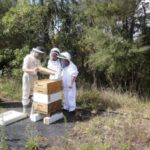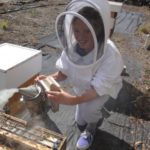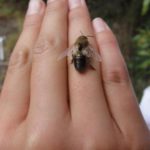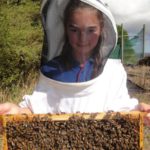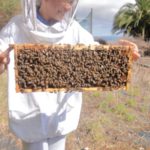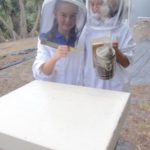Many years ago I purchased on old badly dilapidated book first published in May 1901.
The style is, by today’s standards, archaic – but the book contains some fundamentals about
The Bee which are worthy of repetition and so the article under may give new beekeepers some
Interesting historical data and perhaps serve to update the knowledge of the more experienced among us.
The Life of the Bee – by Maurice Maeterlinck
The Bibliography of the Bee is very extensive.
From the beginning, this strange little creature, that lives in a society under complicated laws, and executes prodigious labours in darkness, has attracted the notice of men.
From Aristotle to present day the bee has been studied and loved.
I suggest that the real history of the bee begins in the 17th. century with the discoveries of the Dutch Savant Swammerdam, and the Flemish naturalist Clutius, who was a little prior to Swammerdam.
Both of these men arrived at certain important truths such as – the Maternity of the principal bee – hither to looked upon as a King . This discovery – by dissection and scientific observation – threw the whole political scheme of the hive into most unexpected light by basing it upon Maternity.
In 1750 in Geneva – Huber was born – and fell blind in his early youth.
Interested in earlier research about bees he sort to verify this early research, and became passionately absorbed in these activities and eventually, with the assistance of Francis Burnens, devoted his entire life to the study of bees – all the more remarkable when one considers that he never saw, with his own eyes a comb of honey – his “New Observations on Bees” published in 1789 in the form of letters to Charles Bonnet, has remained an unfailing abundant treasurehouse into which subsequent writers have dipped – and whilst in the course of time – a few errors or incomplete statements may be found – there is not one of his principal statements that have been disproved.
Some years of silence followed Huber’s revelations, but then a German clergyman Dzierzon contrived the first hive with moveable combs thereby enabling the beekeeper henceforth to take his share of the harvest of Natures Nectar without being forced to destroy his best colonies – and in one instance annihilate the work of a whole year.
This hive – still very imperfect – received a masterly redevelopment at the hands of Langstroth – who invented the moveable frame – this frame has been adopted world wide with extraordinary success.
It then occurred to Mehring that if the bees were supplied with artificial wax foundation they would be spared the labour of fashioning the wax and constructing the cells which cost them much time and energy, and a greatly reduced harvest of their stores of honey. It was found that the bees readily accepted this foundation and adapted it to their requirements.
Today’s beekeepers – have much to thank these early lovers of the bee for the system of moveable frames and wax foundation and the understanding of the political structure of the bee colony.








